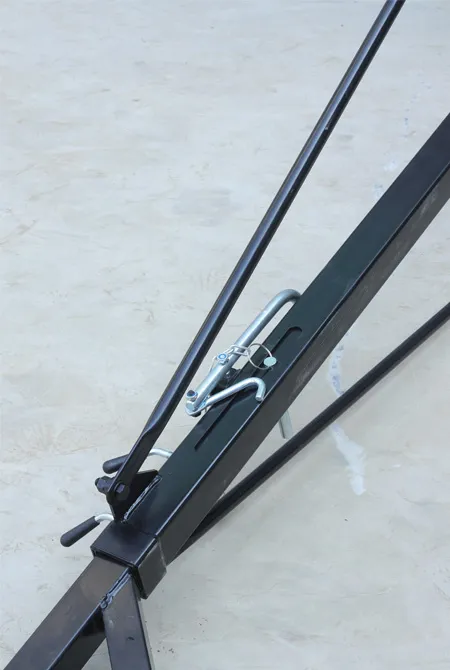roller heavy machine
The Evolution and Impact of Roller Heavy Machines in Construction
In the realm of construction, the use of heavy machinery has evolved dramatically over the years. Among these formidable machines, roller heavy machines stand out for their essential role in compaction, paving, and maintenance of surfaces. These machines, designed to provide the necessary pressure on surfaces to create a solid foundation, are indispensable in modern construction and civil engineering projects.
Understanding Roller Heavy Machines
Roller heavy machines come in various types, each serving distinct purposes. The most common categories include smooth drum rollers, pneumatic rollers, and tandem rollers. Smooth drum rollers feature a large, heavy cylindrical drum that effectively compacts soil, asphalt, and other materials. Pneumatic rollers consist of multiple rubber tires that can adapt to different surface conditions, providing superior compaction for a variety of materials. Tandem rollers, which have two smooth drums, are often used for finishing asphalt pavement and ensuring a smooth, even surface.
The design and technology behind these machines have advanced significantly. Modern rollers are not just simple mechanical devices; they are equipped with powerful engines, advanced hydraulic systems, and enhanced control mechanisms. These innovations allow operators to achieve optimal compaction with minimal effort while also improving the efficiency of the work process.
The Mechanism of Compaction
The process of compaction involves applying stress to a material, which reduces its voids and increases its density. There are several factors that influence the effectiveness of compaction, including the type of soil or material, moisture content, and the type of compactor being used. Roller heavy machines utilize static weight, vibration, or a combination of both to achieve effective compaction. The application of vibratory force, for instance, allows for deeper penetration of the compaction effort, resulting in a solid and stable base for construction.
Operators must understand soil characteristics and site conditions to optimize the compaction process. Inadequate compaction can lead to settling, cracking, and other structural issues in the future. Hence, the role of roller heavy machines transcends mere operation; it involves assessing the construction parameters to ensure the health and longevity of structures.
roller heavy machine

The Importance of Roller Heavy Machines in Construction
The significance of roller heavy machines in construction cannot be overstated. They are vital for projects ranging from road construction to the establishment of complex industrial facilities. Compacting base layers for roads ensures they can withstand traffic loads, while proper compaction in foundations prevents future settlement, which could lead to structural failures.
Moreover, roller heavy machines contribute to the economic aspect of projects. Efficient compaction reduces the amount of material required and helps in the rapid completion of projects, which ultimately lowers labor costs. When surfaces are properly compacted, they require less maintenance over time, resulting in long-term cost savings for infrastructure management.
Environmental Considerations
As the construction industry becomes increasingly aware of its environmental impact, roller heavy machines are adapting to meet these challenges. Manufacturers are developing machines with reduced emissions and improved fuel efficiency. Additionally, advancements in technology, such as the integration of GPS and other monitoring systems, allow for better planning and execution, further minimizing the environmental footprint.
Furthermore, in sustainable construction practices, roller machines are being employed to work with recycled materials, such as reclaimed asphalt pavement. The ability to efficiently compact these materials not only reduces waste but also promotes sustainability within the construction industry.
Conclusion
In summary, roller heavy machines are a cornerstone of modern construction practices, facilitating effective compaction and ensuring the durability of structures. Their evolution over the years, from basic mechanical machines to sophisticated, high-tech equipment, has transformed the landscape of construction. As the industry continues to grow and adapt to new challenges, roller heavy machines will undoubtedly play a crucial role in paving the way for future developments, both literally and figuratively. With ongoing advancements and increased focus on sustainability, the future of roller heavy machinery looks promising, ready to meet the needs of a changing world.
-
Portable 2000 lb Gantry Crane | Heavy-Duty & AdjustableNewsAug.30,2025
-
Versatile Lifting Solutions with Gantry and Overhead CranesNewsAug.29,2025
-
The Versatile Mobile Gantry Crane SolutionNewsAug.29,2025
-
Reliable Movement with Heavy Machinery Skates and RollersNewsAug.29,2025
-
Reliable Lifting Performance with 2000 lb Gantry Crane and 2 Ton Overhead SystemsNewsAug.29,2025
-
Maximize Lifting Efficiency with PML Magnetic LiftersNewsAug.29,2025
-
Efficient Relocation Starts with Reliable Machinery MoversNewsAug.29,2025
